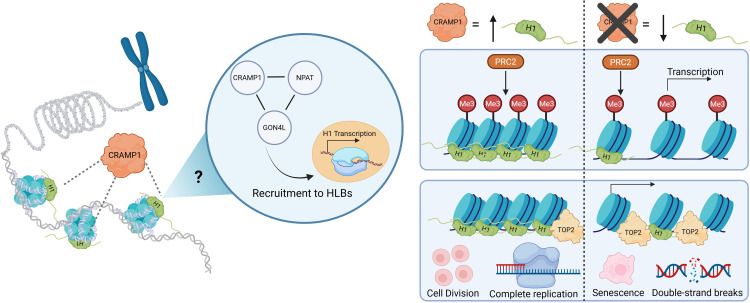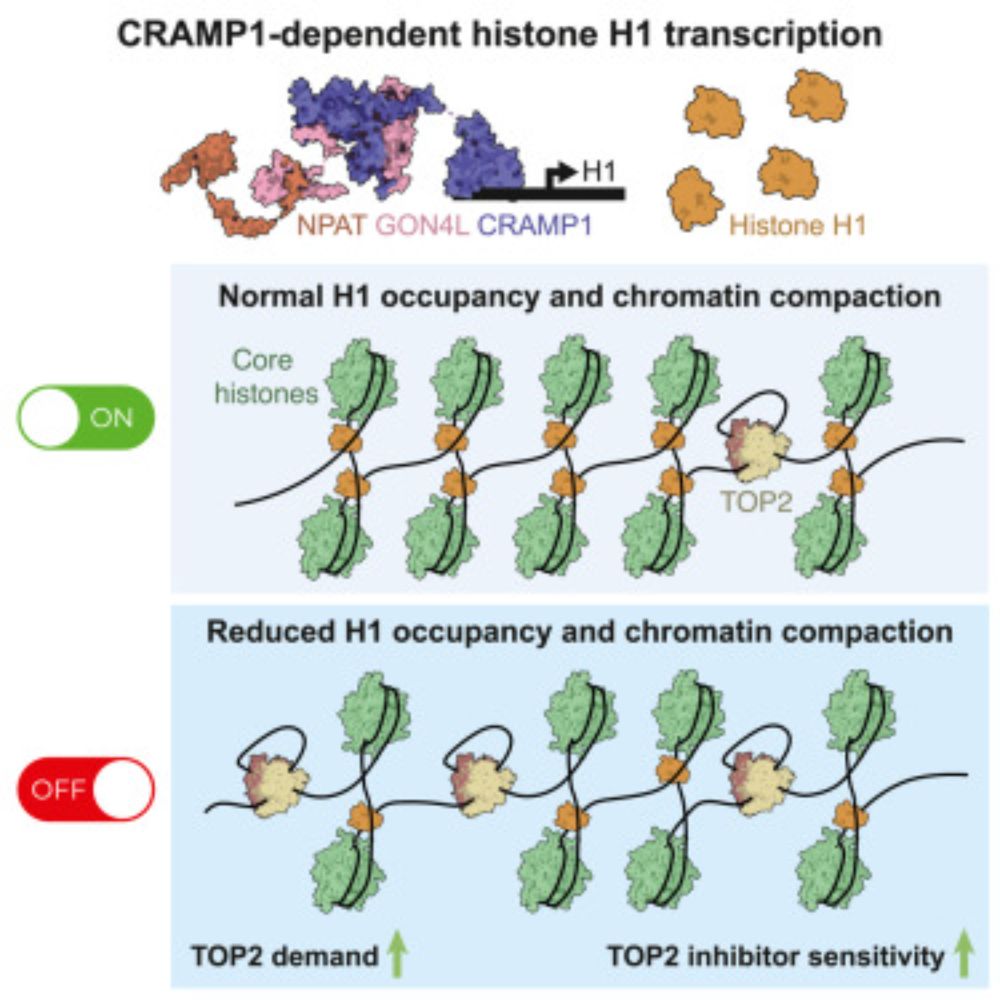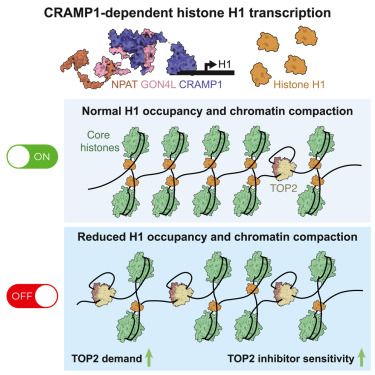Andreas Ingham
@andreasingham.bsky.social
PhD fellow at the Mailand lab. Interested in histone transcription, but also follow any climbing-related content
Reposted by Andreas Ingham
What specific targets & roles are there for all distinct polyubiquitin chain types?
Niels Mailand, Robert Shearer et al profile a panel of #ubiquitin replacement cell lines, implicating K29 chains in chromatin regulation via SUV39H1 destabilization
www.embopress.org/doi/full/10....
Niels Mailand, Robert Shearer et al profile a panel of #ubiquitin replacement cell lines, implicating K29 chains in chromatin regulation via SUV39H1 destabilization
www.embopress.org/doi/full/10....

October 27, 2025 at 11:51 AM
What specific targets & roles are there for all distinct polyubiquitin chain types?
Niels Mailand, Robert Shearer et al profile a panel of #ubiquitin replacement cell lines, implicating K29 chains in chromatin regulation via SUV39H1 destabilization
www.embopress.org/doi/full/10....
Niels Mailand, Robert Shearer et al profile a panel of #ubiquitin replacement cell lines, implicating K29 chains in chromatin regulation via SUV39H1 destabilization
www.embopress.org/doi/full/10....
Reposted by Andreas Ingham
Excited to share our lab’s latest preprint! We identify DDIAS as a novel single-stranded DNA-binding component of the TOPBP1–CIP2A complex, which acts in a mitotic DNA damage response pathway to protect chromosome integrity. Short summary below, and read it here: www.biorxiv.org/content/10.1...

DDIAS is a single-stranded DNA-binding effector of the TOPBP1-CIP2A complex in mitosis
DNA double-strand breaks and unresolved DNA replication intermediates are particularly dangerous during mitosis. Paradoxically, cells inactivate canonical DNA repair mechanisms during chromosome segre...
www.biorxiv.org
September 10, 2025 at 3:18 PM
Excited to share our lab’s latest preprint! We identify DDIAS as a novel single-stranded DNA-binding component of the TOPBP1–CIP2A complex, which acts in a mitotic DNA damage response pathway to protect chromosome integrity. Short summary below, and read it here: www.biorxiv.org/content/10.1...
Reposted by Andreas Ingham
It is not always safe to repair DNA Damage. Sometimes, cells "just bypass it".
During DNA replication, repair of lesions on DNA can be dangerous. Cells instead "tolerate" DNA damage and focus on finishing replication.
Read our review and find out why and how: doi.org/10.1016/j.ti...
During DNA replication, repair of lesions on DNA can be dangerous. Cells instead "tolerate" DNA damage and focus on finishing replication.
Read our review and find out why and how: doi.org/10.1016/j.ti...

August 22, 2025 at 11:48 AM
It is not always safe to repair DNA Damage. Sometimes, cells "just bypass it".
During DNA replication, repair of lesions on DNA can be dangerous. Cells instead "tolerate" DNA damage and focus on finishing replication.
Read our review and find out why and how: doi.org/10.1016/j.ti...
During DNA replication, repair of lesions on DNA can be dangerous. Cells instead "tolerate" DNA damage and focus on finishing replication.
Read our review and find out why and how: doi.org/10.1016/j.ti...
Reposted by Andreas Ingham
CRAMP1’s surprising grip on linker histones

CRAMP1’s surprising grip on linker histones
In this issue of Molecular Cell, Ingham et al. and Matthews et al. report CRAMP1 as a key regulator of linker histone transcription in human cells.
dlvr.it
July 9, 2025 at 11:33 AM
CRAMP1’s surprising grip on linker histones
Linker histone expression is uniquely controlled by a specific pathway, which can be manipulated to increase TOP2i sensitivity! Proud to share first authorship on our story now out in @cp-molcell.bsky.social. www.cell.com/molecular-ce...

CRAMP1-dependent histone H1 biogenesis is essential for topoisomerase II inhibitor tolerance
Ingham et al. identify a dedicated H1 linker histone biogenesis pathway in human cells,
driven by the protein CRAMP1 that functions as an H1 transcription factor. They demonstrate
that defective CRAMP...
www.cell.com
June 19, 2025 at 6:39 AM
Linker histone expression is uniquely controlled by a specific pathway, which can be manipulated to increase TOP2i sensitivity! Proud to share first authorship on our story now out in @cp-molcell.bsky.social. www.cell.com/molecular-ce...
Reposted by Andreas Ingham
Online Now: CRAMP1-dependent histone H1 biogenesis is essential for topoisomerase II inhibitor tolerance Online now:

CRAMP1-dependent histone H1 biogenesis is essential for topoisomerase II inhibitor tolerance
Ingham et al. identify a dedicated H1 linker histone biogenesis pathway in human cells, driven by the protein CRAMP1 that functions as an H1 transcription factor. They demonstrate that defective CRAMP1-dependent H1 synthesis induces excessive demand for topoisomerase II activity in low-accessibility chromatin states, thereby increasing sensitivity to TOP2 inhibitors.
dlvr.it
June 13, 2025 at 3:19 PM
Online Now: CRAMP1-dependent histone H1 biogenesis is essential for topoisomerase II inhibitor tolerance Online now:

